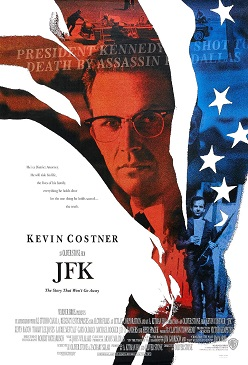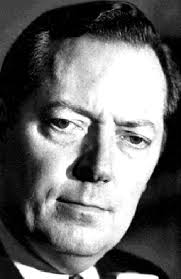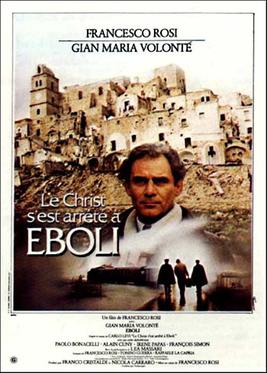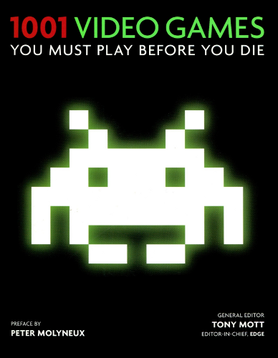Related Research Articles

Jack Leon Ruby was an American nightclub owner who killed Lee Harvey Oswald on November 24, 1963, two days after Oswald was accused of assassinating President John F. Kennedy. Ruby shot and mortally wounded Oswald on live television in the basement of Dallas Police Headquarters and was immediately arrested.

JFK is a 1991 American epic political thriller film written and directed by Oliver Stone. It examines the investigation into the assassination of John F. Kennedy by New Orleans district attorney Jim Garrison, who came to believe there was a conspiracy to assassinate President Kennedy and that Lee Harvey Oswald was a scapegoat.

A Movie is a 1958 experimental collage film by American artist Bruce Conner. It combines pieces of found footage taken from various sources such as newsreels, soft-core pornography, and B movies, all set to a score featuring Ottorino Respighi's Pines of Rome.

James Carothers Garrison was the District Attorney of Orleans Parish, Louisiana, from 1962 to 1973 and later a state appellate court judge. A member of the Democratic Party, he is best known for his investigations into the assassination of John F. Kennedy and the prosecution of New Orleans businessman Clay Shaw to that effect in 1969, which ended in Shaw's acquittal. He wrote three published books, one of which became a prime source for Oliver Stone's film JFK in 1991, in which Garrison was portrayed by Kevin Costner, while Garrison himself made a cameo appearance as Earl Warren.

On November 22, 1963, John F. Kennedy, the 35th president of the United States, was assassinated while riding in a presidential motorcade through Dealey Plaza in Dallas, Texas. Kennedy was in the vehicle with his wife Jacqueline, Texas governor John Connally, and Connally's wife Nellie, when he was fatally shot from the nearby Texas School Book Depository by Lee Harvey Oswald, a former U.S. Marine. The motorcade rushed to Parkland Memorial Hospital, where Kennedy was pronounced dead about 30 minutes after the shooting; Connally was also wounded in the attack but recovered. Vice President Lyndon B. Johnson was hastily sworn in as president two hours and eight minutes later aboard Air Force One at Dallas Love Field.

Norma Jean Lollis Hill was an American woman who was an eyewitness to the assassination of United States President John F. Kennedy in Dallas, Texas, on November 22, 1963. Hill was known as the "Lady in Red" because of the long red raincoat she wore that day, as seen in Abraham Zapruder's film of the assassination. A teacher by profession, she was a consultant for Oliver Stone's 1991 film JFK and co-wrote JFK: The Last Dissenting Witness with Bill Sloan.
Bruce Conner was an American artist who worked with assemblage, film, drawing, sculpture, painting, collage, and photography.

Executive Action is an American political thriller film. It is a fictionalized account of a conspiracy to assassinate United States President John F. Kennedy. Released in November 1973 on the tenth anniversary of the JFK assassination, the film stars Burt Lancaster, Robert Ryan, and Will Geer. It was directed by David Miller, produced by Edward Lewis, and written by Dalton Trumbo. Trumbo's screenplay was adapted from the novel Executive Action by Donald Freed and Mark Lane, which was published earlier in 1973. Freed and Lane received a film credit for their story.

On March 1, 1967, New Orleans District attorney Jim Garrison arrested and charged New Orleans businessman Clay Shaw with conspiring to assassinate President Kennedy, with the help of Lee Harvey Oswald, David Ferrie, and others. On January 29, 1969, Shaw was brought to trial in Orleans Parish Criminal Court on these charges. On March 1, 1969, a jury took less than an hour to find Shaw not guilty. It remains the only trial to be brought for the assassination of President Kennedy.

1001 Movies You Must See Before You Die is a film reference book edited by Steven Jay Schneider with original essays on each film contributed by over 70 film critics. It is a part of a series designed and produced by Quintessence Editions, a London-based company, and published in English-language versions by Cassell Illustrated (UK), ABC Books, and Barron's (US). The first edition was published in 2003. The most recent edition was published on 14 December 2021. Contributors include Adrian Martin, Jonathan Rosenbaum, Richard Peña, David Stratton, and Margaret Pomeranz.
Orville Orhel Nix was a witness to the assassination of United States President John F. Kennedy in Dallas, Texas on November 22, 1963. His filming of the shooting, which only captured the last few seconds of it, but shows the grassy knoll in its entirety, is considered to be nearly as important as the film by Abraham Zapruder.

Heaven and Earth Magic is a 1962 American avant-garde independent cutout animation film directed by visual artist, filmmaker and mystic Harry Everett Smith. Jonas Mekas gave the film its title Heaven and Earth Magic in 1964/65.

1001 Albums You Must Hear Before You Die is a musical reference book first published in 2005 by Universe Publishing. Part of the 1001 Before You Die series, it compiles writings and information on albums chosen by a panel of music critics to be the most important, influential, and best in popular music between the 1950s and the 2010s. The book is edited by Robert Dimery, an English writer and editor who had previously worked for magazines such as Time Out and Vogue.

Christ Stopped at Eboli, also known as Eboli in the United States, is a 1979 drama film directed by Francesco Rosi, adapted from the book of the same name by Carlo Levi. It stars Gian Maria Volonté as Levi, a political dissident under Fascism who was exiled in the Basilicata region in Southern Italy.
The assassination of John F. Kennedy and the subsequent conspiracy theories surrounding it have been discussed, referenced, or recreated in popular culture numerous times.

The Zapruder film is a silent 8mm color motion picture sequence shot by Abraham Zapruder with a Bell & Howell home-movie camera, as United States President John F. Kennedy's motorcade passed through Dealey Plaza in Dallas, Texas, on November 22, 1963. Unexpectedly, it captured the President's assassination.
The CIA Kennedy assassination is a prominent John F. Kennedy assassination conspiracy theory. According to ABC News, the Central Intelligence Agency (CIA) is represented in nearly every theory that involves American conspirators. The secretive nature of the CIA, and the conjecture surrounding the high-profile political assassinations in the United States during the 1960s, has made the CIA a plausible suspect for some who believe in a conspiracy. Conspiracy theorists have ascribed various motives for CIA involvement in the assassination of President Kennedy, including Kennedy's firing of CIA director Allen Dulles, Kennedy's refusal to provide air support to the Bay of Pigs invasion, Kennedy's plan to cut the agency's budget by 20 percent, and the belief that the president was weak on communism. In 1979, the House Select Committee on Assassinations (HSCA) concluded that the CIA was not involved in the assassination of Kennedy.

The assassination of John F. Kennedy on November 22, 1963, has spawned numerous conspiracy theories. These theories allege the involvement of the CIA, the Mafia, Vice President Lyndon B. Johnson, Cuban Prime Minister Fidel Castro, the KGB, or some combination of these individuals and entities. Some conspiracy theories have alleged a coverup by parts of the federal government, such as the original FBI investigators, the Warren Commission, or the CIA. Former Los Angeles District Attorney Vincent Bugliosi estimated that a total of 42 groups, 82 assassins, and 214 people had been accused at one time or another in various conspiracy scenarios.

1001 Video Games You Must Play Before You Die is a video game reference book first published in October 2010. It consists of a list of video games released between 1970 and 2013, arranged chronologically by release date. Each entry in the list is accompanied by a short essay written by a video game critic, with some entries accompanied by screen shots. It was edited by Tony Mott, long-time editor of Edge magazine. The book's preface was written by video game designer Peter Molyneux.

The Great Movies is the name of several publications, both online and in print, from Roger Ebert, an American film critic and columnist for The Chicago Sun-Times. The object was, as Ebert put it, to "make a tour of the landmarks of the first century of cinema", by writing essays on films Ebert considered particularly well-made, important or influential.